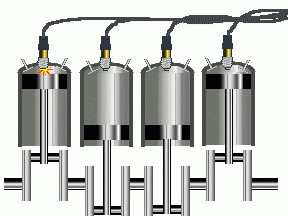What does CC in Engine Capacity Mean?
When we say that a car has a 1150cc engine, what does it mean? Why do people keep referring to the cc when looking for good vehicles? Please explain this term.
Answer:
Thank you for your question. Let me explain the term “CC” in relation to the automobiles. Let’s start.
The term “cc” stands for “cubic centimeters”. In the context of automobile-engines, it indicates the total volume of all the cylinders in an engine. For example, when we say a car has a 1150cc engine, it means that the total volume of all its cylinders is equal to 1150 cubic centimeters.
Let’s go a step further and understand the origin of the term cc and why it’s widely used in the locomotive world.
Origin and Significance of the Term CC in Engine Capacity
The term cc, denoting cubic centimeters, originated from the international system of units, also known as the metric system.
It is a unit of volume that is commonly used in many fields. In the automotive world, this term is used to measure the displacement or the size of the engine.
This concept dates back to the early days of the internal combustion engine when inventors and engineers were seeking a standard way to measure and compare engine sizes.
As early combustion engines utilized pistons that moved within cylinders to create power, the total volume displaced by these pistons became a logical choice for this measurement.
It's important to remember that a cylinder's volume is not only dependent on its physical dimensions but also on the distance the piston travels within it (known as the stroke).
An engine with a greater total cylinder volume will generally have the potential to generate more power, as it can burn more fuel during each engine cycle.
CC in Engine Capacity: It’s All About Size and Power
A common misconception is that the larger the engine capacity, the more powerful the vehicle. While it's generally true that larger engines can produce more power, this is not always the case.
Power output depends not only on size but also on the engine's efficiency, design, fuel type, and several other factors.
For instance, a 2000cc engine could potentially be more powerful than a 2500cc engine if it has a more efficient design or uses a different type of fuel.
Advancements in engine technology, such as turbocharging, have allowed smaller engines to produce much more power than they could in the past.
That said, engine size, expressed in cc, is still a crucial aspect to consider when evaluating an engine's potential performance.
Larger engines, generally speaking, have greater torque, which is the force that helps a vehicle start moving from rest and helps it climb hills. A high torque engine can also provide better towing capacity.
Why CC is Important for Vehicle Buyers
Engine capacity is important to potential vehicle buyers for a number of reasons. First, it gives an indication of the vehicle's potential power and performance.
Many performance-oriented buyers may seek vehicles with larger engines, as these typically offer more power and a more engaging driving experience.
Engine capacity can also have implications for fuel economy. Generally, larger engines consume more fuel, as they need to burn more fuel to operate.
However, advancements in engine technology and design mean that this isn't always the case, and many modern, smaller engines are able to deliver excellent fuel economy while still offering good performance.
Lastly, in many countries, the engine's capacity, measured in cc, can impact the taxation and insurance costs for a vehicle.
Typically, vehicles with larger engines incur higher taxes and insurance premiums, as they are seen as being more powerful and potentially more risky to drive.
The Evolution of Engine Capacity Measurement
While cubic centimeters (cc) has long been a standard measure for engine capacity, it's not the only unit of measurement used. In the United States, for example, engine size is often expressed in liters (L) rather than cubic centimeters.
For instance, a 2000cc engine would be referred to as a 2.0L engine, as there are 1000cc in a liter.
In the early days of automobiles, engines were much less efficient, so having a larger engine capacity was often necessary to achieve sufficient power.
As technology has evolved, engine design has improved, and smaller engines can now produce power outputs that were once only possible with much larger engines.
Today, engineers and manufacturers strive for the optimal balance of power, fuel efficiency, and emissions in their engine designs.
The term cc in engine capacity refers to the total volume of an engine's cylinders, which can give an indication of the engine's potential power output and fuel consumption.
It's a valuable piece of information for vehicle buyers, but it's important to understand that it's just one factor among many to consider when assessing a vehicle's performance.
With the continuous advancements in engine technology, the correlation between engine size and power is becoming less straightforward, making it even more critical for consumers to have a broader understanding of what goes into creating the power and performance of a vehicle.
Let me know if this helps you understand the term “cc” and its significance. If you have any specific questions about the topic, I’ll be happy to help.




